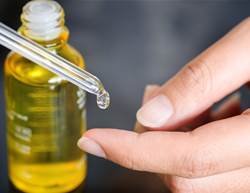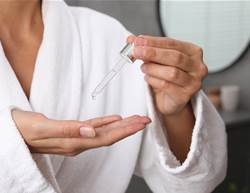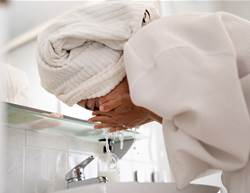With so many skincare products and ingredients claiming to be the key to healthy skin, it can be difficult to discern what’s actually worth the hype. If you’ve been active online lately, you may have heard of snail mucin for skin, one of the best Korean skincare products that promises a radiant complexion. But what is snail mucin? Along with hyaluronic acid and niacinamide, it’s a popular pick for maintaining a healthy complexion.
Like your favourite hyaluronic acid serums, think of snail mucin as a humectant; an ingredient that helps your skin lock in hydration, explains dermatologist Dr Karan Lal. “It’s really good for people that need something that’s going to heal their skin, hydrate their skin, and pair well with other skincare ingredients.”
What is snail mucin?
“Snail mucin is an attractive ingredient in skincare products due to its unique composition,” explains dermatologist Dr Divya Shokeen. “It contains a variety of beneficial compounds, including hyaluronic acid, glycoproteins, peptides, low dose glycolic acid, as well as growth factors. These components contribute to its moisturising, hydrating, and regenerative properties.”
The ingredient, made of snail secretion filtrate, is something naturally secreted by a specific type of snail, says Dr Lal, who adds that the snails are in fact not harmed in the process of collecting the secretions.
As for the texture, it’s a bit thick and gooey, which Dr Lal says some may not like. But if used properly (more on that below), it should feel comfortable on the face as “it’s meant to hydrate and heal the skin, and give it a nice, dewy glow.”
Benefits of snail mucin for skin
According to Dr Shokeen and Dr Lal, snail mucin benefits may include:
- Enhanced hydration and moisture
- Boosted collagen production
- Aided skin elasticity
- Reduce the appearance of fine lines and wrinkles
- Aid in wound healing
- Soothed skin post-procedure (chemical peels, lasers, microneedling, etc.)
Where does snail mucin come from?
Snails leave mucus, or mucin, in their wake when moving. Snail mucin can be collected from specific types of snails in a variety of ways. One way, Dr Lal notes, is via “snail sex,” which helps them naturally produce mucus, or snail mucin. The mucin can also be collected, according to popular beauty brand, COSRX, by placing snails over a mesh net in a dark and quiet room, allowing them to roam for an hour before collecting mucin when returned back to their habitat. The brand also emphasised that snails do not experience external stress in the mucin collection process.
How to use snail mucin
“Generally, using a snail mucin skincare product once or twice daily should yield noticeable results over time,” Dr Shokeen explains. “However, consistency is key, so regular and long-term use is often recommended for optimal benefits.”
Dr Lal suggests thinking of your snail mucin product like you would think of hyaluronic acid, and recommends using the product as part of a “moisture sandwich.” After washing your face, apply the snail mucin on a damp face, “because that will help increase the moisture absorption into the skin.”
It’s also important to note that snail mucin products come in many forms, so you’ll want to consider if the product is a serum, toner, or moisturiser before deciding how it will fit into your routine. As a general rule of thumb, apply products from lightest to heaviest after cleansing, following this skincare routine order: toner, serum, moisturiser. Dr Lal says that these products can be used once or twice per day, but that snail mucin moisturisers tend to be on the heavier side and may be best used as a night cream.










